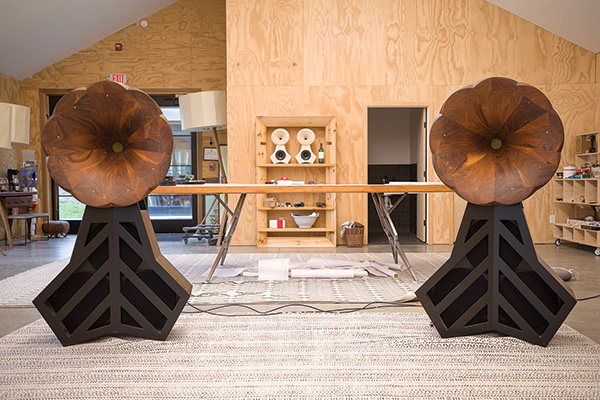In my experience the audibility of subwoofer location depends on crossover frequency, crossover slope, placement of subwoofer, timing, level of spl relative to the mains and room interaction (it might create vibrations in floor, walls, furniture etc).
Based on my own testing with two subs placed in all different kinds of places I'd say that the further away from the fronts the sub is located, the less freedom you have in regards to crossover, spl and careless timing.
Geddes' approach where you're starting with sub 1 closest to mains with highest spl and gradually decreasing level (crossovers also?) seemed to work okay for me with regards to localization issues. I did find that placing a sub next to the couch made it difficult to keep "invisible" in all seats when crossed at above 60-70 hz.
All that said, my experience with a double bass array where the woofers on the back wall worked up to around 120 hz was nothing but extra-ordinarily positive. Absolutely no chance of localizing or hearing anything other than magnificent bass everywhere with the mains providing all localization cues and phase information. This experience made me a believer of the bass = room philosophy.
Based on my own testing with two subs placed in all different kinds of places I'd say that the further away from the fronts the sub is located, the less freedom you have in regards to crossover, spl and careless timing.
Geddes' approach where you're starting with sub 1 closest to mains with highest spl and gradually decreasing level (crossovers also?) seemed to work okay for me with regards to localization issues. I did find that placing a sub next to the couch made it difficult to keep "invisible" in all seats when crossed at above 60-70 hz.
All that said, my experience with a double bass array where the woofers on the back wall worked up to around 120 hz was nothing but extra-ordinarily positive. Absolutely no chance of localizing or hearing anything other than magnificent bass everywhere with the mains providing all localization cues and phase information. This experience made me a believer of the bass = room philosophy.


